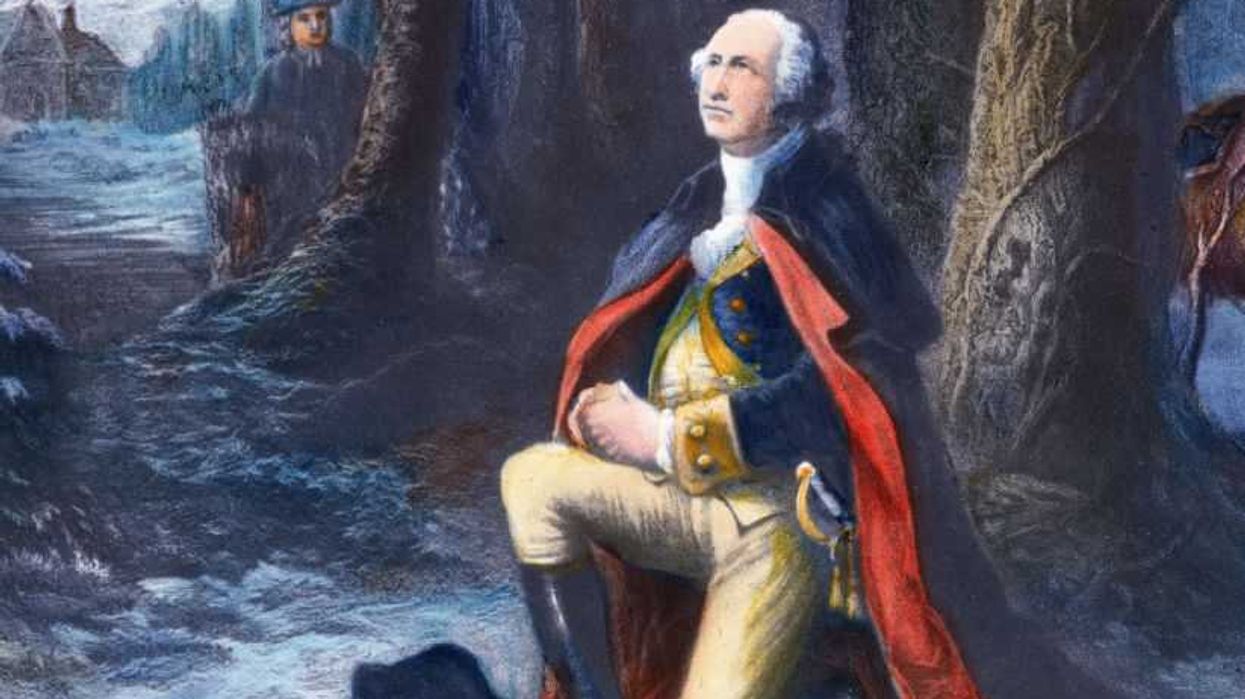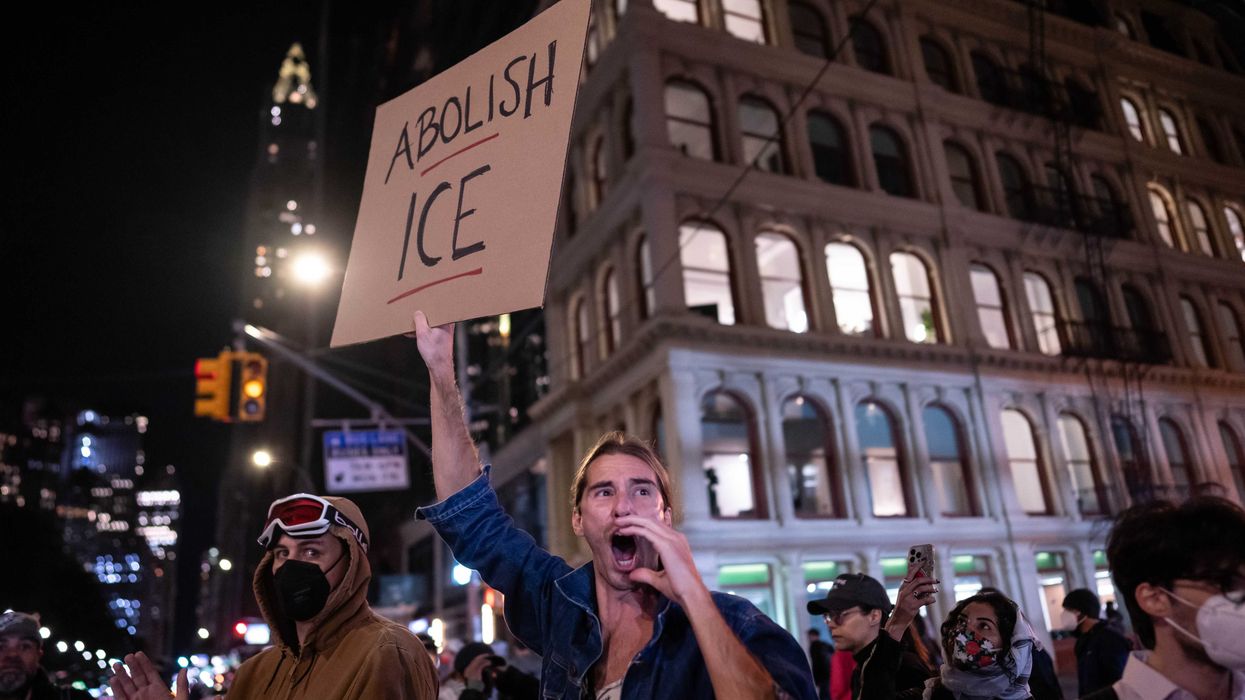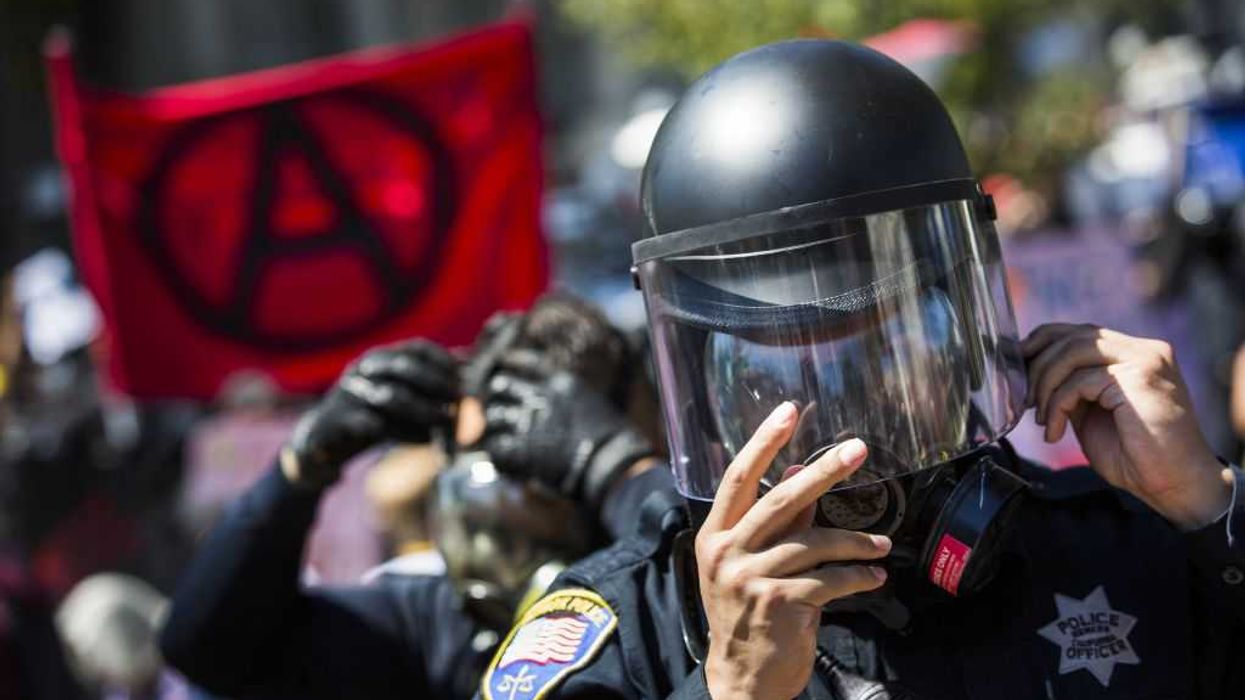Violence erupted again at a Donald Trump rally over the weekend, and Trump supporters need to know one thing: They're being used as pawns by George Soros and those wanting to destabilize the West.
Chaos is their goal, and it was on full display in Arizona. The highway leading into a Trump rally was shut down by Soros-funded Black Lives Matter protestors. Inside another venue, a Trump protestor wore a KKK hood, deliberately trying to agitate the crowd.
"So these people came in, and of course, they're going to be pigs — not the Trump people, the Black Lives Matter, Soros people," Glenn said Monday on The Glenn Beck Program. "They are trying to get you to strike back."
Restraint is key — be angry, be vocal, but don't react with violence.
Glenn commented on one Trump supporter who reacted in horrific violence, punching and kicking a protestor who was being escorted out of a rally.
"This is the French Revolution, not the American Revolution. And it doesn't end well," Glenn said. "You want the French Revolution or the American Revolution? One ends horribly. The other ends in a rebirth of freedom."
Enjoy this complimentary clip from The Glenn Beck Program:
Below is a rush transcript of this segment, it might contain errors:
GLENN: Also, in Arizona, there was a --it's getting ugly. It is really getting ugly. Soros is funding the Black Lives Matter riots. There is a whole system now that they have set up to prepare us -- to prepare them, the Occupy Wall Street and the Black Lives Matter people, including the Muslim Brotherhood, Soros is funding this -- really, this training camp over the summer, where you can learn how to protest and how to break things up and be violent. I'm sorry. He's suggesting that they're not violent at all.
And you know the Black Lives Matter, Occupy Wall Street, and Muslim Brotherhood people are never violent. So he's funding, for instance, in -- in Phoenix, this shutdown of the freeway. Did you see that -- follow that over the weekend?
PAT: Yeah.
GLENN: And these people just shut the freeway down. And they were all Black Lives Matter, Soros people.
(BREAK)
GLENN: Soros like the imams over in Iran, like the -- the people over in Europe that are -- what is it, The Coming Insurrection people, like Occupy Wall Street, like Black Lives Matter, they all want one thing, and that is chaos.
So Soros could be explained as easily as he wants chaos. He wants it to go to a brokered convention because he knows that will cause all kinds of problems. He wants to shut down the streets and have riots in the streets. It doesn't matter. Just shut them down. He is looking for chaos. And who is the father of chaos? I would just like to remind you.
Chaos is what people are shooting for right now that want to collapse the West.
So two stories out of Arizona, besides the roads being shut down by the Black Lives Matter people. When you see Black Lives Matter, I want you to understand, we've already been through this. This is Occupy Wall Street. Black Lives Matter. The Muslim Brotherhood. This is the Occupy Wall Street movement, version two.
And remember what all -- Occupy Wall Street and the press wanted to happen. They wanted us to strike back. When we didn't strike back, they disappeared. They had no power. But the minute they found, "Oh, we can get somebody to strike back at us, it's going to cause riots in the street." This is George Soros, remember. Top-down, bottom-up, inside-out. That's George Soros because he saw it work in Hungary when the communists took over.
You get enough of your people in the government, you get riots on the street, the people -- the regular people scream out and say, "Somebody has got to make this stop." The top comes down, turns the country inside out, and it's over. So the worst thing you can do is respond in anger or violence. But try that at a Trump rally.
So these people came in. And, of course, they're going to be pigs. Not the Trump people. The Black Lives Matter, Soros people. Of course. They are trying to get you to strike back.
So somebody goes into this Trump rally. I think it was a woman. And this person -- I don't know if it was a woman or a man. This person puts on a Klan hood in the middle of Donald Trump's rally. Now, how do you think that's going to go over?
STU: Had his back patted by the people near him.
GLENN: What?
STU: People started patting their back.
GLENN: Yes. You could do that in any really. You could do that at a Cruz rally, and it's not going to go over. You do that in a Trump rally, and you have a very good chance of getting coldcocked in the face.
Well, what a surprise. Trump says, "Get that person out of here. That's disgusting." Well, of course, his crowd will get that person out of there. This person was vile, despicable, you name it. I am not siding with this person with the Klan hood.
But as they're being escorted upstairs, a black guy coldcocks this person, which is bad enough. Then this person is laying down on the ground of the steps, and he body-blow kicks her repeatedly. It is something like I've never seen before. It was despicable. Absolutely despicable.
Violence is coming. And I'm going to leave it at that. Violence is coming 1968-style. And it's coming to our conventions, unless we get a hold of ourselves.
And when I say that, I want the Trump people to hear me clearly: You're being set up. Do you understand that? Look at the history. Look at what Occupy Wall Street did. They want you to strike back. And your fearless leader is too arrogant to figure out what's going on. And your fearless leader is not leading you to a place of peace. He is telling you that he will pay for your legal fees.
You will be responsible for the end of the republic if you don't wise up and figure this out: restraint. You can be as angry as you want. Restraint. "Well, they deserved it." Restraint. The republic is at stake. And you're being set up.
Does that make sense to anybody? If you know people are trying to get you to do something, you're an idiot if you go and do it. What do you think they want?
Now, let me tell you another story: In that blockade, there was -- of the freeway, which was despicable again. George Soros money. The blockade happens. This guy who is driving his construction truck, he's sitting there. He's stuck in traffic. He's a youth pastor. And he's just trying to get to his church.
Everybody is in line trying to get to this Trump rally. He's just trying to get to his church for service. The blockade happens. CNN covers it. His truck is up front with the name of his construction company. The Trump supporters are now calling in death threats to his construction company. He was a youth pastor. He has nothing to do with it. He was stuck in traffic, just like everyone else. But you went and jumped to the conclusion that he was involved. This is the French Revolution, not the American Revolution. And it doesn't end well.
But it seems like all we're doing right now is just jockeying for who will be the next dictator. Could it be Barack Obama? Could it be Bernie Sanders? Could it be Clinton? Could it be -- why not? Donald Trump? They're all jockeying for power. None of them for the principles of the Constitution. You want the French Revolution or the American Revolution?
One ends horribly. The other ends in a rebirth of freedom.
(OUT AT 8:25AM)
GLENN: So what did -- I read a quote. I thought this was an old quote. Is, do we know yet about what Donald Trump has said or not?
STU: We're looking at it. I heard it this morning on the radio.
GLENN: Is he paying the guy's legal fees. Do we know that yet? Is he --
STU: Because there's multiple -- you talked about someone in a hood who got kicked. The one I saw was in an American flag shirt that got kicked on the ground.
GLENN: Okay. That's why I said I wasn't sure. Because I think the woman in the hat -- in the hood, I think that was a woman.
STU: Okay.
GLENN: And I think she was leaving, and maybe somebody else was kicked down to the ground or something. I don't know. I saw the video on the plane. But I know that, if it wasn't the woman in the hood, then it was somebody else that was being escorted. And she was -- and he was punched in the face, down to the ground, and then kicked. Repeated body blows. That guy should be in jail. I don't know if he --
PAT: He was arrested. I mean, it looks like they were taking him.
GLENN: And what is the story of Trump's campaign manager roughing somebody else out and getting him out?
STU: So there's a protester that they were -- the campaign manager and another guy were standing next to. He started walking away. The same guy who grabbed the girl and called all the controversy last week. He grabbed this guy by the collar. Pulled him back.
The guy to his left, at the same time, also pulled him back and pulled him back harder. The Trump campaign was, well, this -- it wasn't Corey Lewandowski, our campaign manager. You can see him clearly grab his collar and pull him back.
But he said, really, he was reacting to the other guy who pulled much harder, and they tried to blow it off on that. Took about 24 hours for it to be revealed that the other guy was also a Trump campaign worker that the campaign just forgot to mention that in their denial.
PAT: And it shows.
STU: They blamed it on the other guy, and it was their guy too.
PAT: And it shows that's what he does. So it kind of reinforces the proof of the other one.
STU: Uh-huh.
GLENN: It does. They're all New York, Mafioso-style thugs. That's all they are.
PAT: Yeah, they're thugs. Yeah.
GLENN: And I can't believe -- I mean, there's got to be some Trump supporters -- because Trump supporters, there's a lot of people, I've met people who are --
PAT: Reasonable.
GLENN: Don't like me because of what I'm saying. And I'm not saying they're necessarily open-minded on things, but they are not thugs. They're not thugs. They're not somebody that is going to kick somebody when they're down.
STU: Uh-huh.
GLENN: And I think the vast majority of Trump supporters are like that, they won't kick somebody when they go down. It's probably 10 percent of Trump supporters that are bad, really bottom-of-the-barrel, Occupy Wall Street, except -- I hate to say on the conservative side. They think they're on the right. They're just, they're progressive Republicans. They have to be.
You know, I saw a study this weekend: What do Trump supporters have in common? Did you guys see this? We have to look for this. They did a test, and I got to read the test to you. They did a test. They put questions out on the field and said, "Are you a Trump supporter?" If you said yes, they asked you all of these questions: Pick this or this. Which is better? This or this? And they found the thread through all of them. And you have -- if you're a Trump supporter, you have one thing in common for sure, and that is authoritarianism.
STU: Yeah.
GLENN: We've seen that. We've seen a test like that. But have you actually read the questions?
STU: I think I did read some of the --
GLENN: Yeah, they were very interesting. Very interesting questions. We'll give those questions to you here in a minute and see if you -- see how you answer them. Because that's what they have in -- I like the power of the government to take care of things and take care of business.
Featured Image: Protesters filter into the crowd of Trump supporters during a campaign rally at Fountain Park on March 19, 2016 in Fountain Hills, Arizona. Trumps visit to Arizona is the second time in three months as he looks to gain the GOP nomination for President. (Photo by Ralph Freso/Getty Images)


 Harold M. Lambert / Contributor | Getty Images
Harold M. Lambert / Contributor | Getty Images
 Adam Gray / Stringer | Getty Images
Adam Gray / Stringer | Getty Images Anadolu / Contributor | Getty Images
Anadolu / Contributor | Getty Images Brandon Bell / Staff | Getty Images
Brandon Bell / Staff | Getty Images